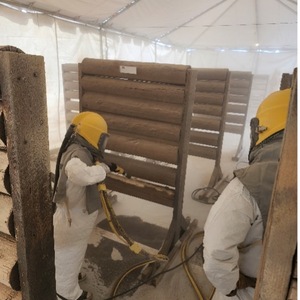
Writing from Canada, a GBA reader named plumb_bob notes the gradual decline of the log home, a building style he loves in spite of its drawbacks.
“Log homes were quite common in my area, and throughout most of Canada, until quite recently,” he says in this recent Q&A post. “Issues with code compliance and energy efficiency have made log construction both expensive and (even more) impractical.”
In his small town, there once were four log home builders. Now there are none.
“The big British Columbia companies are all shipping overseas or to locations where building permits are not required, like remote lodges, because the local market has disappeared,” he says. “Is there any place for log buildings in the current industry? I personally love log homes, but do admit that they tend to be less efficient and tight than standard construction.”
So that’s the crux of this Q&A Spotlight—is there a place for an admittedly dated building technique as energy performance grows ever more important? Can log homes be adapted in some way to keep this iconic building type relevant?
Log homes were appropriate for settlers
Not according to Malcolm Taylor, an architect and builder in the Pacific Northwest, who doesn’t see much of a place for log homes outside of the high-end niche market.
“Beyond that I don’t see any pre-apocalypse future for them,” he says. “Aesthetics aside, they are a method of construction used by settlers with an abundant timber supply who lacked the tools necessary to mill the lumber. Log homes use huge amounts of wood, provide a leaky low-R envelope, shrink b0th initially and seasonally, have no service cavity, and start deteriorating almost as soon as they are finished. Having renovated several, I find it hard to work…
Weekly Newsletter
Get building science and energy efficiency advice, plus special offers, in your inbox.

This article is only available to GBA Prime Members
Sign up for a free trial and get instant access to this article as well as GBA’s complete library of premium articles and construction details.
Start Free TrialAlready a member? Log in















5 Comments
I used to meet with a bunch of friends every few weeks. One was a professor of entomology, and another was renovating a log house. Each meeting Charles the log enthusiast would show up with a small jar containing an insect he had found during his work, which Richard the bug guy would identify and expound on what it was up to. We didn't get to find out how his project turned out as Charles' wife had enough of the never ending house construction and left him, so he had to sell up.
That reminds me of a quip by permaculture co-founder Bill Mollison, by way of our local organic farming guru Eliot Coleman: you don't have a slug problem, you have a duck deficiency.
In this case, perhaps the log home owner doesn't an insect problem, but a bug collection device?!
Edit to add: someone commented on my "name dropping." I heard the quip directly from Eliot Coleman and assumed he came up with it, but a quick Google search shows that it's attributed to Mollison. I didn't want anyone to think that I made it up so I shared its provenance.
Michael,
Very few ducks or chickens left near us. Bears cleaned them out this summer. The cougars also came through and ate most of the domestic cats, including ours :(
I'm sorry to hear that, Malcolm. I didn't realize they could catch cats! A fox recently got our two remaining 8-year old hens. I'm trying to think of a positive way to spin having an excess of bears or foxes...
Thanks. I'm not particularly well disposed to cougars right now.
What does excite me it the use of timber as structural and decorative surfaces married to modern building technology. There is an indigenous-led firm near me that I think does good work in that regard: https://www.formline.ca/work
Log in or become a member to post a comment.
Sign up Log in